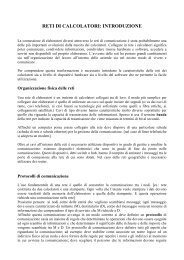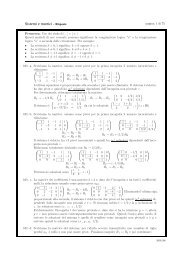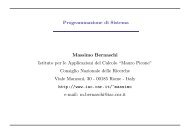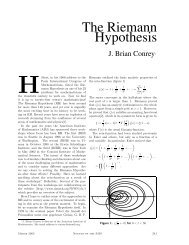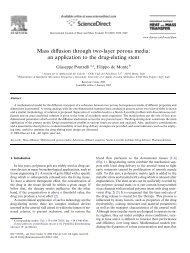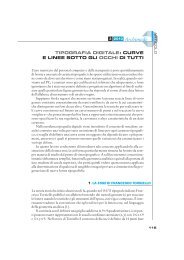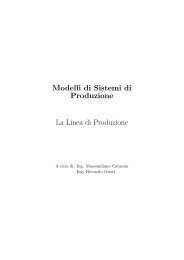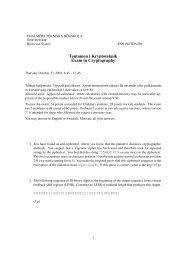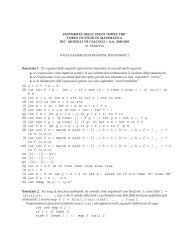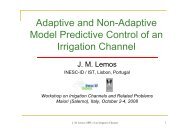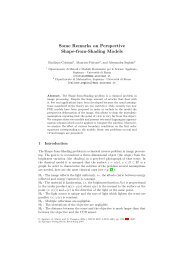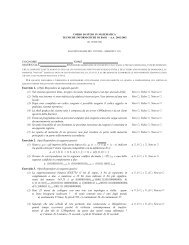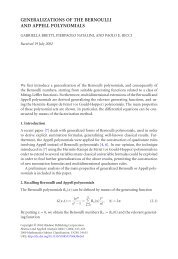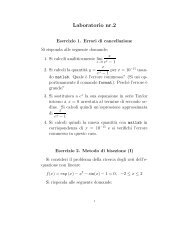A SHORT COURSE IN THE MODELING OF CHEMOTAXIS
A SHORT COURSE IN THE MODELING OF CHEMOTAXIS
A SHORT COURSE IN THE MODELING OF CHEMOTAXIS
You also want an ePaper? Increase the reach of your titles
YUMPU automatically turns print PDFs into web optimized ePapers that Google loves.
eaction with a free radical R at a rate ke (L6 + R ke<br />
−→ L5), to obtain the variable<br />
L5(t), the concentration of LDL particles with five antioxidant defenses remaining.<br />
In this fashion, they obtain a system of nine ordinary differential equations governing<br />
the concentration of free radicals R(t), the concentration of LDL particles with i<br />
antioxidant defenses Li(t), i = 0..6, and the concentration of oxidized LDL Lox(t).<br />
The time rate of change of each species of LDL is given by the linear reactions,<br />
and the change in radical concentration is increased by a production term (that is<br />
estimated since it is not measurable) and decreased by reaction with LDL species.<br />
In the model of atherogenesis proposed in this paper, we adopt Cobbold Sherratt<br />
and Maxwell’s model of LDL oxidation. We modify their equations only by adding<br />
spatial dependence in the form of a diffusion term. LDL in both its native and<br />
oxidized form are only slightly mobile within the arterial tissue. We account for this<br />
by a small diffusion coefficient. This process is obligatory in the formation of the<br />
atherosclerotic plaque. In 1977, Goldstein et al. [5] discovered that certain immune<br />
cells, in particular macrophages, have a high affinity for oxidatively-modified LDL<br />
but not native LDL. This results in trapping of cholesterol within the arterial wall.<br />
Macrophages engorged with lipids are referred to as foam cells. Unable to perform<br />
their normal duty of degrading debris, these lipid-laden cells accumulate and signal<br />
other immune cells to the site instigating plaque growth.<br />
Corruption of the normal immune process<br />
Circulating immune cells in the blood, such as monocytes and T-lymphocytes,<br />
migrate into tissues in response to chemical signals secreted by various cells including<br />
endothelial cells and other immune cells. Under normal healthy conditions, these<br />
immune cells aid in the degradation of apoptic cells as well as the removal of foreign<br />
58



